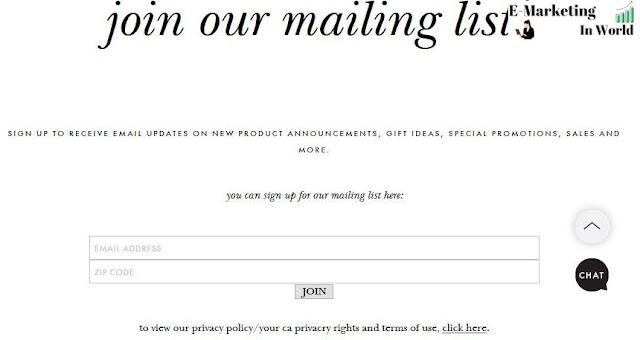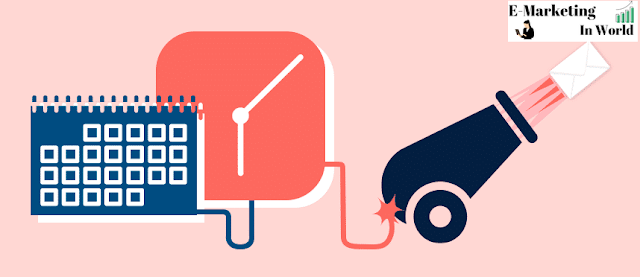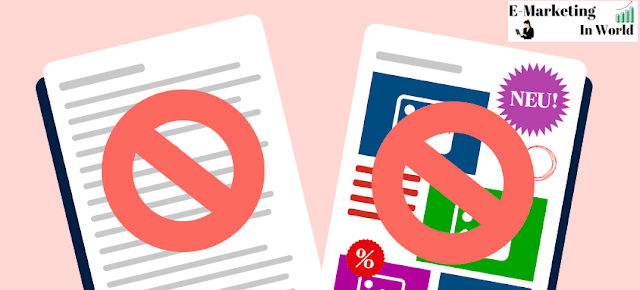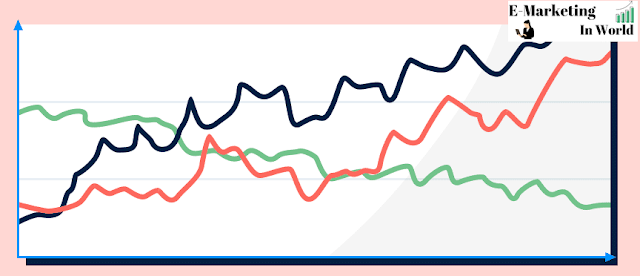.jpg) |
| email marketing |
Email marketing is dead! Nobody reads newsletters anymore! It's all just spam anyway! Is it really like that? No!
Email marketing has been the online marketing channel with the best ROI for years, decades in fact. Fast, cheap, and still the best way to retain customers in the long term instead of buying new ones over and over again. So don't write off the good old newsletter, but come up with something good for your newsletter again. To make it really good, I'll show you 10 mistakes you'll avoid from now on.
The errors at a glance:
- Complicated registration for the newsletter.
- Shipping frequency is not optimal.
- Unbalanced Content.
- No personalization.
- No call to action.
- Boring subject line.
- Legally uncertain.
- Not optimized for smartphones.
- No automation.
- No reporting
1. Registration: You have to have a degree to register for your newsletter
 |
| email marketing |
Do you want to collect as much data as possible and not a single spam registration in your system? Sure, but your goal must be to generate as many newsletter subscriptions as possible from interested parties. Complicated and long registration forms on your website are more of a hindrance, even if a large amount of user data is tempting at first.
People don't want to click through ten fields and you're only allowed to ask for the email address as a mandatory field anyway. The submission of further data must remain voluntary. Therefore, keep your form lean and prefer to use automated mailings to ask specific questions and thus gradually enrich the profiles of the recipients.
When submitting the form, refrain from doing arithmetic problems, even if they are at the elementary school level. Annoying captchas and too many mouse clicks also successfully keep your e-mail distribution list small.
Ideally, anyone who is interested only registers with their e-mail address and then receives a clean double opt-in mailing so that the registration is also completed in a legally compliant manner. Keep it sweet and simple.
2. Sending frequency: You send three emails a day or just one a year
 |
| email marketing |
Let us hear from you regularly, but don't overdo it. Very few will want to read from you three times a day or a week. But three times a year won't do you any good either, because then the recipients have long forgotten you. Test your sending frequency and pay attention to the opening and unsubscribe rates.
Just ask in the welcome email or in the registration form (voluntary information, see 1.) how often a recipient would like to hear from you. Then you can adapt your sending frequency to the needs of your target group. Once you have defined your intervals, be sure to test the shipping times in terms of the day of the week and time.
3. Content: Your newsletter consists only of pictures with discount offers or extends as a long desert of text
 |
| email marketing |
Sure, your topics are very important to you and you spend a lot of time creating content that you want to be recognized. But attention is a rare commodity, and your recipients will only scan the newsletter to see if there's anything useful. To find the right balance between text length and image quantity and pay attention to the added value. If you write past your recipients, they will look for the unsubscribe link (and find it, because of course you send it with data protection regulations).
As with the mailing frequency, you can also send out a mailing with a small survey to find out what really interests your readership. You then know exactly which content you can focus on and your recipients are already looking forward to the newsletter.
4. Personalization: You send to the anonymous masses
This is where opinions differ in times of the GDPR and the ePrivacy Regulation. Some experts are critical of data collection for personalization. The recipients would be too close without offering real added value with personalization. In addition, many recipients forget that they gave their name when registering and may then assume that the address was bought illegally.
Others argue that impersonal messages are not read at all. Direct addressing by name is an absolute must. The truth, as so often, lies somewhere in between. If you ask for more data and interests in the course of several mailings and make it transparent what you need the data for, that shouldn't be a problem. In this way, you can use the personal approach and generate more interaction with your content, but at the same time you don't come across as dubious.
5. Call To Action: Your emails don't require readers to take action
 |
| email marketing |
In the simplest case, the “buy now” button will do the trick. In the best-case scenario, a short text with a suitable image will arouse so much curiosity that the recipient will immediately want to find out more. Before sending the mailing, set at least one clear goal and include appropriate calls to action. Feel free to vary the text in your buttons from time to time.
Examples of buttons that lead to blog articles:
- I want to read.
- show me more.
- Learn more.
- Read now.
- Sounds exciting
Examples of buttons that lead to shop products:
- Save now.
- ensure a discount.
- Strike here.
- Shop and be happy.
- secure your piece.
Be creative and feel free to use unusual formulations.
6. Subject line - You arouse no interest
.jpg) |
| email marketing |
Do you remember the movie “50 First Dates” with Drew Barrymore and Adam Sandler? To start each new day without remembering the last one. This can be compared to an email marketing platform because nobody really remembers your last newsletter very well. So you have to convince your recipients to open the email with every subject line.
The good thing is: In contrast to real dates, you can test different subject lines on thousands of people in your newsletter.
Use no more than 50 characters for the subject line and provide the most important information in it. Make people curious and show the added value at this point.
Subject line tips:
- Don't write everything in capital letters.
- If possible, no $ signs.
- No exclamation marks.
- Avoid words like sweepstakes or very inflammatory statements.
These points are spam signals and can ensure that your newsletter ends up in the spam folder before the date has even started.
7. Everything right: You don't take it too seriously when it comes to data protection
Let's not beat around the bush. You need legally compliant e-mail marketing, otherwise, there are expensive consequences. In concrete terms, this means that you should not buy an e-mail address and always have to work with the double opt-in procedure. Inform your readers of the right to object and integrate an unsubscribe link in every e-mail.
8. Responsive Design: Yes, there are still newsletters that don't look good on smartphones
And that's not all. Unfortunately, I often experience that companies do not send each other test emails to see whether their own newsletter is displayed correctly. When the test mail is used, many marketing managers only look at the desktop version.
You should keep in mind that the majority of e-mails are also accessed on smartphones. A good representation of the small displays is therefore essential. Therefore, test whether all elements are legible and the buttons work. A good newsletter software will also always offer a mobile preview.
9. Automation: You give away potential through too much manual work
Marketing automation offers you many opportunities to get in touch with your recipients without manually composing each email. Here are a few examples of how you can automate your email campaign marketing and become more efficient.
- Welcome email after registration.
- Remind shopping cart abandoners to complete the purchase.
- Reactivation mail if a recipient has not opened it for a long time.
- birthday mail.
- Mailings asking for interests as a basis for personalization.
Simply define a few events in your customer's lifecycle and set up emails accordingly. However, segment your mailings in such a way that your regular newsletter does not go out to the recipients who also receive your birthday mail on that day.
10. Reporting: You don't really care about numbers
 |
| email marketing |
Your email marketing campaign is not an end in itself, but should always fulfill a goal. Target fulfillment should always be measurable so that you know how good your emails are. This is the basis for ongoing optimization and long-term success.
Examples of numbers that should interest you:
- Open Rate - What percentage of my recipients opened the email?
- Click Rate – What percentage of my recipients clicked something in the email?
- Openings by Dispatch Time - Do day and time affect openings?
- Unsubscribe Rate – What percentage of my recipients have unsubscribed from my emails?
Do not give away potential by ignoring the key figures in email marketing for small business. Use the results of your mailings for continuous improvement and make your recipients happy.
Conclusion
The most common mistakes in email marketing are avoidable and often require no more than common sense. Nevertheless, I experience too often how these simple means of optimization remain unused. As a result, some people consider email advertising dead or equate it with spam. From today on you will no longer make this and ten other mistakes.


Comments
Post a Comment